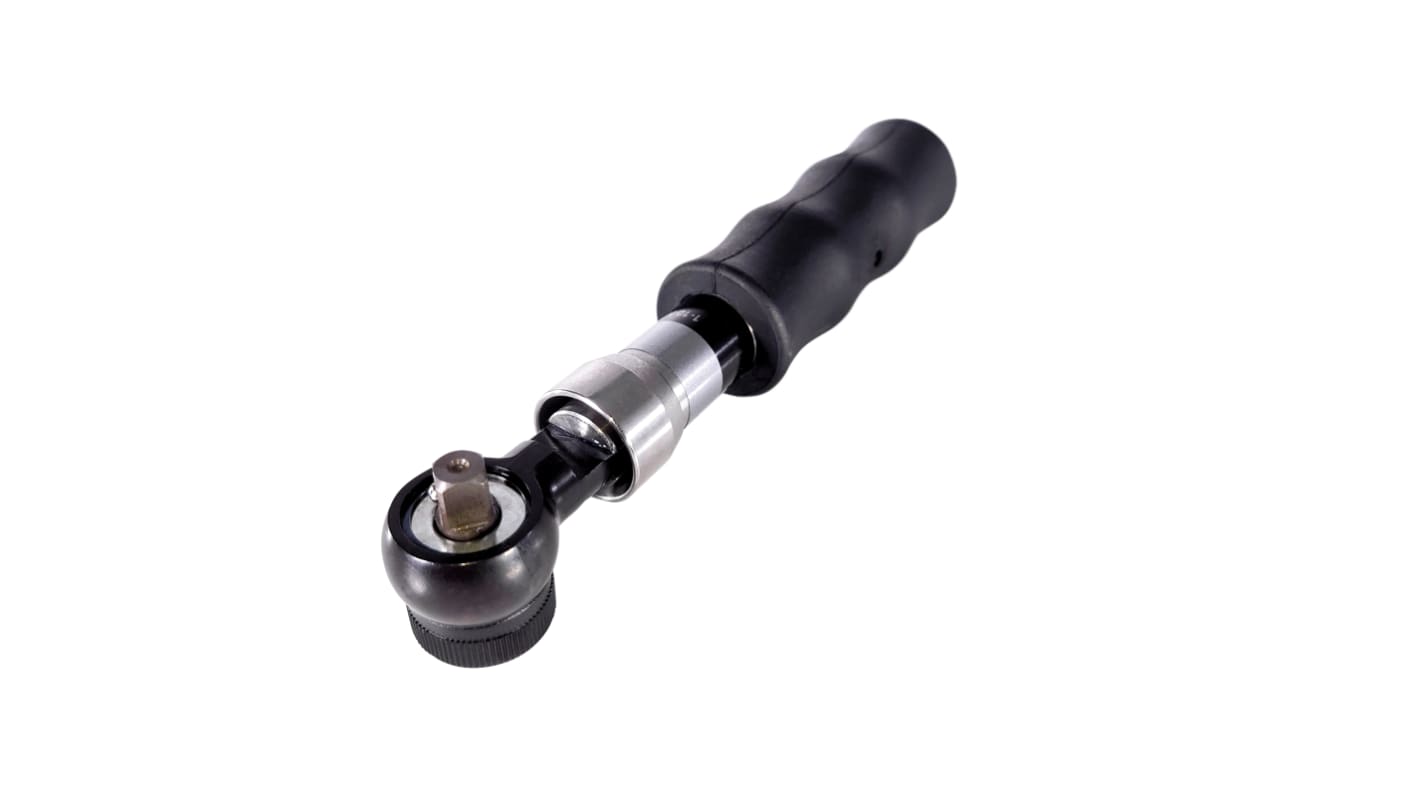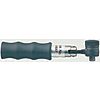Subtotal (1 unit)*
£237.05
(exc. VAT)
£284.46
(inc. VAT)
FREE delivery for orders over £50.00
In Stock
- 79 unit(s) ready to ship
Need more? Click ‘Check delivery dates’ to find extra stock and lead times.
Units | Per unit |
|---|---|
| 1 + | £237.05 |
*price indicative
Calibration Options:
- Calibration Type:
- RSCAL
- RS Stock No.
- 342-5525
Each
£283.55
(exc. VAT)
£340.26
(inc. VAT)
- RS Stock No.:
- 663-897
- Brand:
- RS PRO
Specifications
Technical Reference
Legislation and Compliance
Product Details
Find similar products by selecting one or more attributes.
Select all | Attribute | Value |
|---|---|---|
| Brand | RS PRO | |
| Torque Wrench Type | Breaking Torque Wrench | |
| Torque Range | 1 → 10Nm | |
| Drive Shape | Square | |
| Drive Size | 1/4 in | |
| Overall Length | 105 mm | |
| Accuracy | ±6 % | |
| Select all | ||
|---|---|---|
Brand RS PRO | ||
Torque Wrench Type Breaking Torque Wrench | ||
Torque Range 1 → 10Nm | ||
Drive Shape Square | ||
Drive Size 1/4 in | ||
Overall Length 105 mm | ||
Accuracy ±6 % | ||
RoHS Status: Exempt
- COO (Country of Origin):
- GB
’Breaking’ Torque Wrench Ratchet Handle
This torque wrench is compatible with 1/4 inch driver bits, and is designed to prevent over-tightening when fastening nuts and bolts. The tool applies a pre-set level of torque before 'breaking', preventing you from potentially applying too much force to a fastener.
This torque wrench works when used either clockwise or anti-clockwise, and is ideal for use in low torque applications.
Torque Setting is Required before Use
1. Engage the 1/4" square drive into an appropriate Torque Analyser and slowly apply torque in a clockwise direction until the handle 'breaks'. Note the reading.
2. Remove handle from Analyser and using hexagon key provided remove handle end cap.
3. Insert 3mm hexagon key into grub screw in the end of the adjusting screw. Turn grub screw 1/4 turn anti-clockwise to unlock existingtorque setting. Insert black adjusting key into handle of tool andengage adjusting screw. Rotate using 5 mm hexagon key. Turn clockwise to increase or anticlockwise to decrease torque.Do not unscrew beyond 6mm of end of handle. When set correctly, lock torque setting by re-inserting 3mm hexagon key into grub screw and turn clockwise. Do not attempt to adjust torque setting without first releasing the lock.
4.Re-check torque setting.
Features and Benefits
• Designed to ’break’ at a predetermined torque value, clockwise or anti-clockwise
• Reset by returning to in-line position
• Ideal for use in low torque applications, production or in restricted spaces
• Torque adjustable by the internal hexagon (should be set and calibrated using the torque analysers)
• BS EN ISO 9002:1994; A.Q.A.P.4 Edition 2 - Number 19 UM01; ISO 6789:1992
• CE marked in compliance with European Directives
• 1/4 in drive size
Applications
Torque wrenches can be used with specialist sockets in all kinds of tightening and fastening applications. They are essential when a more professional and precise handling is necessary over a conventional wrench. This is particularly useful where uniformity is a concern, such as in production.
Tool care
Torque wrenches are precise measuring devices which require care in handling. Always place tool in storage box after use. Do not use cheater bars, hammers, or any other damaging object.
Calibrating your torque wrench
Torque wrenches should be calibrated to the desired level of torque with a torque analyser before use. It is recommended that micrometer wrenches are stored at 20% of full reading to maintain accuracy. All torque wrenches should be recalibrated at least once a year or more frequently depending on usage.
This instrument has no external adjustment scale, therefore the calibration will be performed at the lowest limit value marked on the instrument unless you request a calibration set point by emailing (mailto:) Calibration.UK@rs-components.com or, calling 01536 405545 before or at the time of ordering, (during office hours).
Note
Torque wrenches are precise measuring devices which require care in handling. Always place tool in storage box after use. Do not use cheater bars, hammers, or any other damaging object. It is recommended that micrometer wrenches are stored at 20% of full reading to maintain accuracy. All torque wrenches should be recalibrated at least once a year or more frequently depending on usage.
Related links
- RS PRO Breaking Torque Wrench 1/4 in Drive, Square Drive - RS Calibrated
- STAHLWILLE 714R Digital Torque Wrench 1/4 in Drive 9 x 12mm Insert
- RS PRO Breaking Torque Wrench 1/4 in Drive, Square Drive
- RS PRO Breaking Torque Wrench 1/2 in Drive, Square Drive - RS Calibrated
- RS PRO Breaking Torque Wrench 1/4 in Drive, Square Drive - RS Calibrated
- RS PRO Breaking Torque Wrench 3/8 in Drive, Square Drive - RS Calibrated
- SAM Smart Torque Wrench 1/4 in 9 x 12mm Insert
- Stanley Dial Torque Wrench 1/4 in Drive, Square Drive


